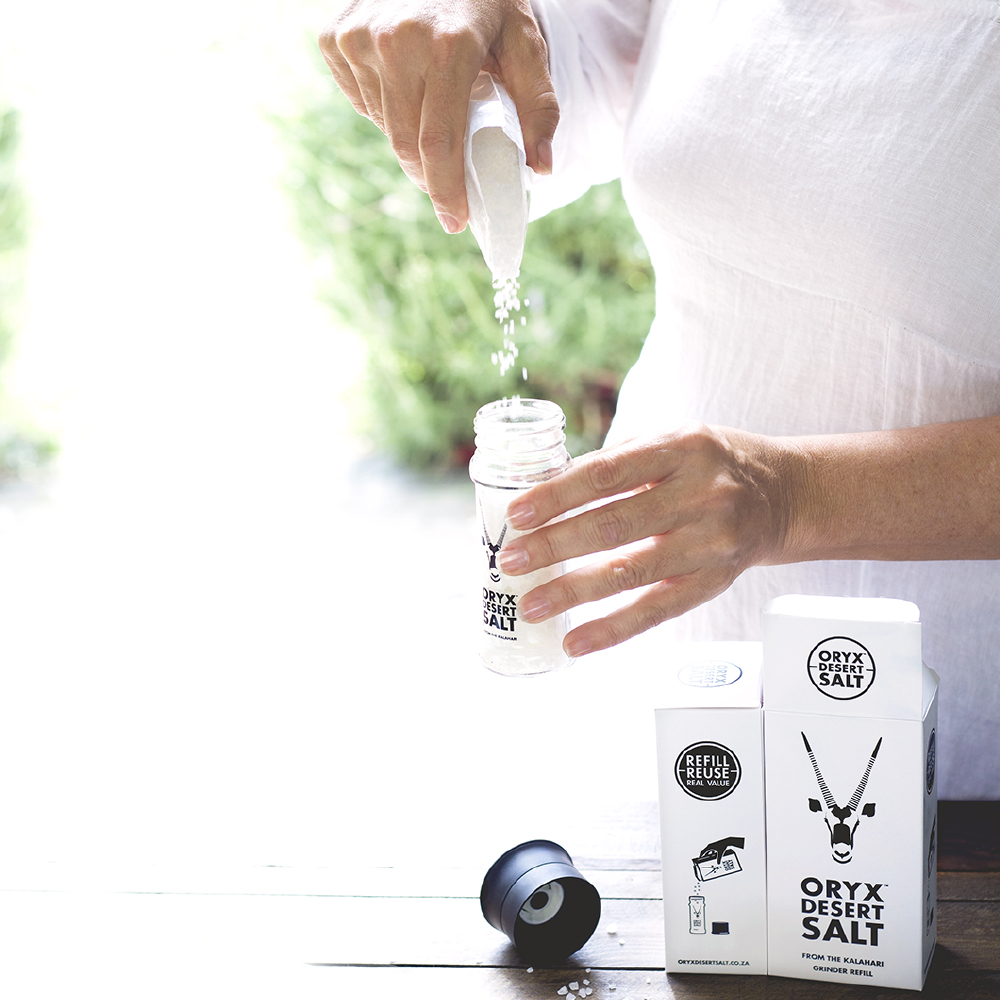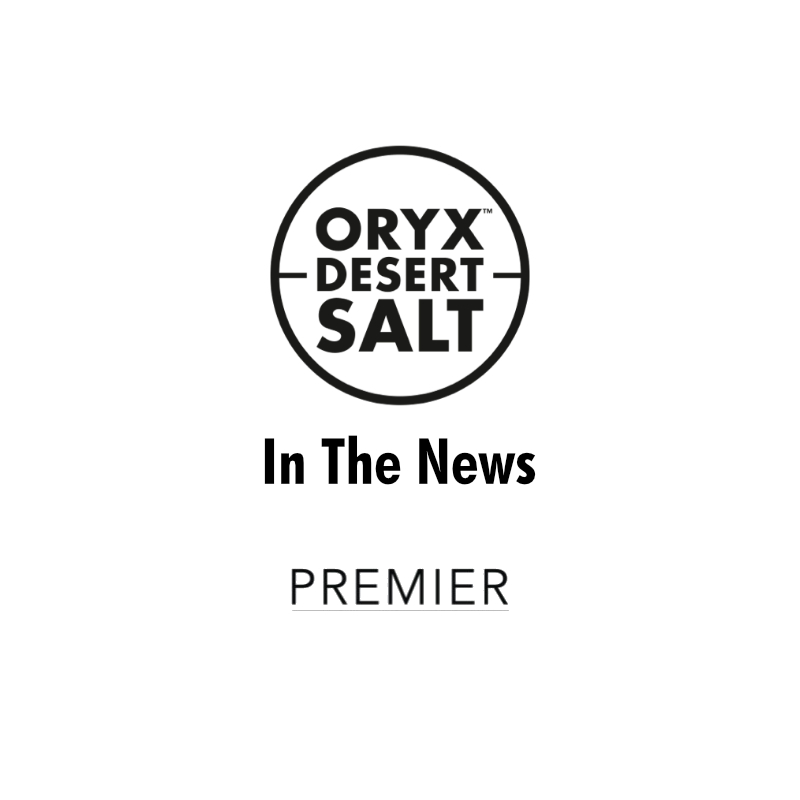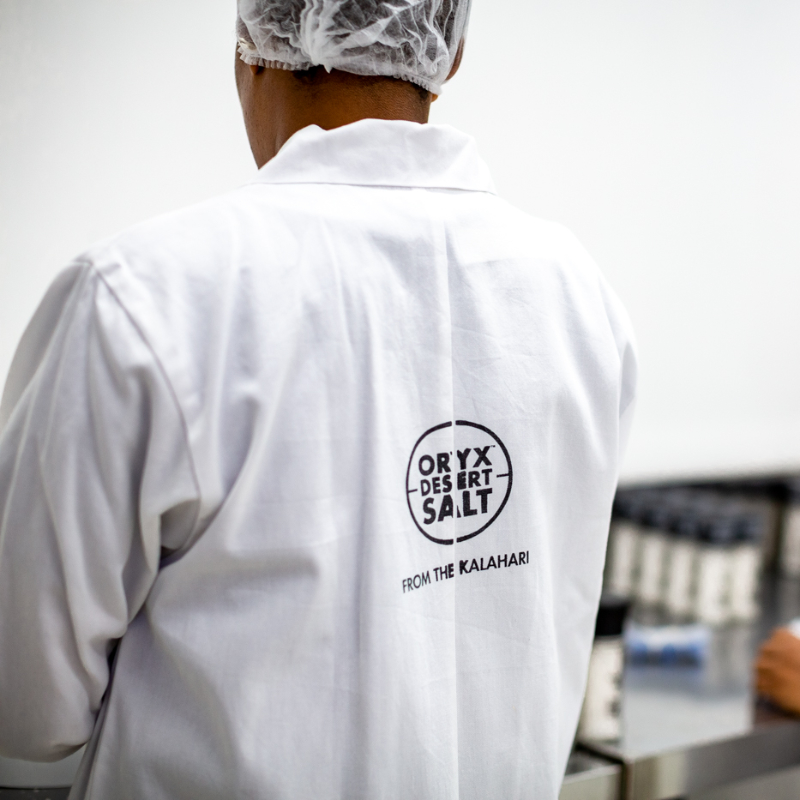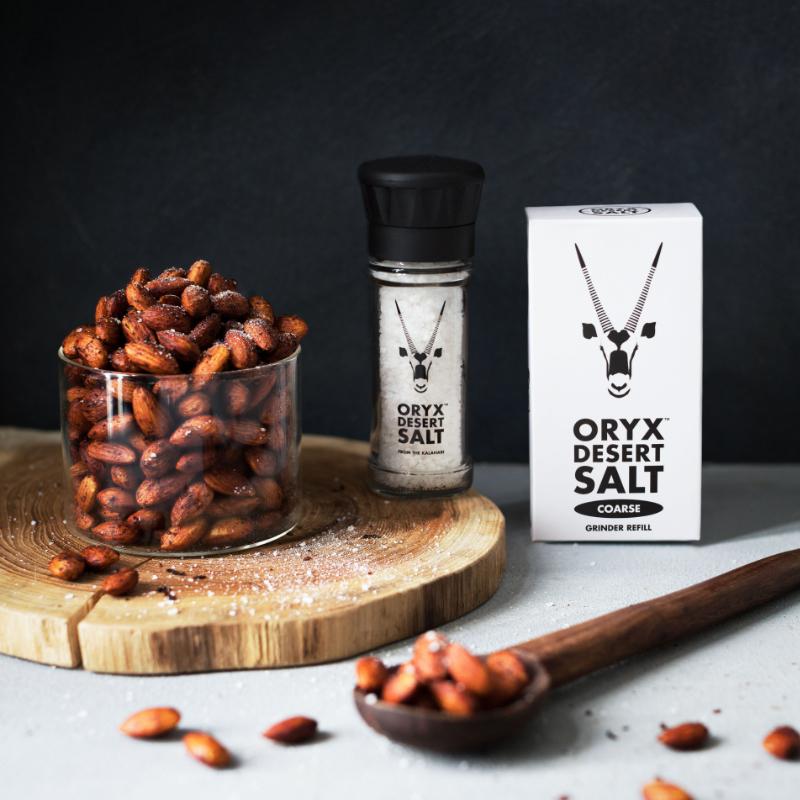
One of the most thrilling moments in Samantha Skyring's life was seeing salt crystals form in front of her eyes. Some of us might equate that with watching paint dry, but to understand her excitement you have to go back about 280 million years, to the geophysical formation of the rock strata that leach their minerals into a briny underground lake north of Upington. This is where Oryx Desert Salt, rich in those ancient minerals, comes from, and it is where Skyring, who runs the SA agency (overseas it is sold as Kalahari Salt), had her crystal-gazing experience.
"After flying 1 000km to Upington, over mostly space and nothingness, we drove for another 250km," she says. "And as we came over a sand dune, there was the pan. It's 10km long and 5km wide. It's hard to grasp the size of it. We all fell silent. It was a reverent moment."
To make salt, water is pumped up from the lake into the pan, where smaller areas have been covered by nets. The water evaporates and salt crystals form on the nets and are collected. In the hot summer, says Skyring, salt crystallises in four weeks. That and the lake's brine content (much higher than sea water) make Kalahari salt easier to produce than sea salt, which can take up to a year to form and is then refined and processed.
Skyring says it is also a renewable resource: "The lake is in a low-lying area, and we've established that it is fed by three underground streams which are constantly flowing, so this is a totally sustainable project."
The company supports a number of community initiatives, including donating a. percentage of every bag sold to the Khomani San and Mier communities of the Kgalagadi Transfrontier Park.
Environmental and social responsibility aside, local chefs love the salt almost as much as gemsbok do (oryx cannot survive without licking salt). Leading restaurants like Aubergine, Hartford House and The Tasting Room use it. Margot Janse of Le Quartier Francais says: "It's the only salt I use, it really has a fantastic flavour. In comparative tastings,
the difference is immediately noticeable."
"The market for natural mineral salt has always been much bigger overseas," says Skyring, "but I think South Africans are ready for it now Chefs like Craig Cormack (of Sofia's restaurant at Morgenster estate) introduced people to Himalayan salt, which created awareness and a market.
Cormack uses Oryx salt now; and he is one of the chefs who understands how the flavour of salt, which is one of the most important ingredients in almost every recipe, can improve the flavour of a dish. Why would a great chef think carefully about every other ingredient he's using, and not think about the salt?
One of Skyring's delights is watching people's faces when she does comparative tastings. "The natural minerals give our salt a very gentle flavour. After you've tasted it, sea salt suddenly tastes bitter, sharp, and processed. The body reacts. The face screws up like when you've sucked on a lemon."
For more information on Oryx Desert Salt, visit www.oryxdesertsalt.co.za.
Featured article in the Sunday Times in October 2017



